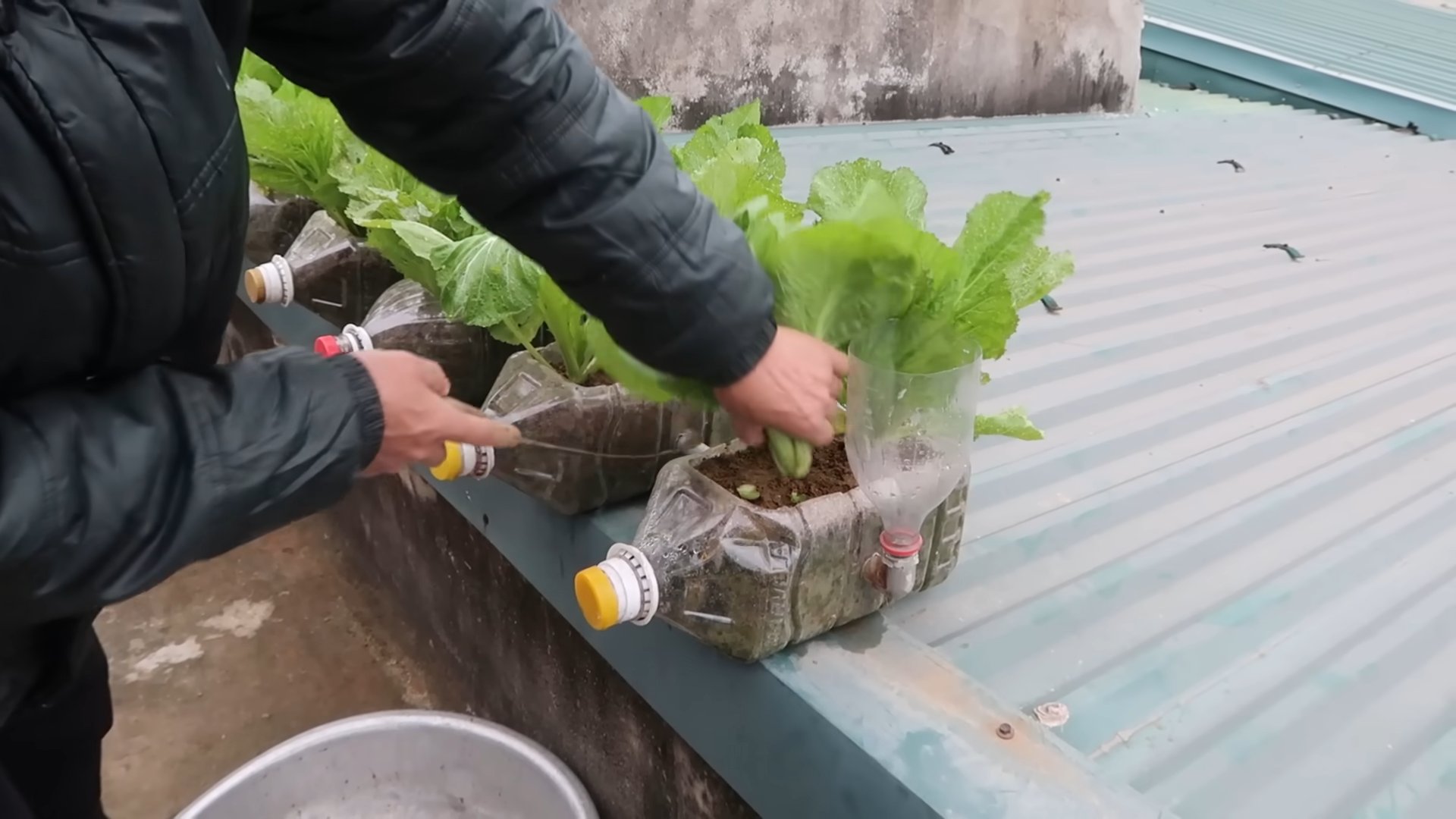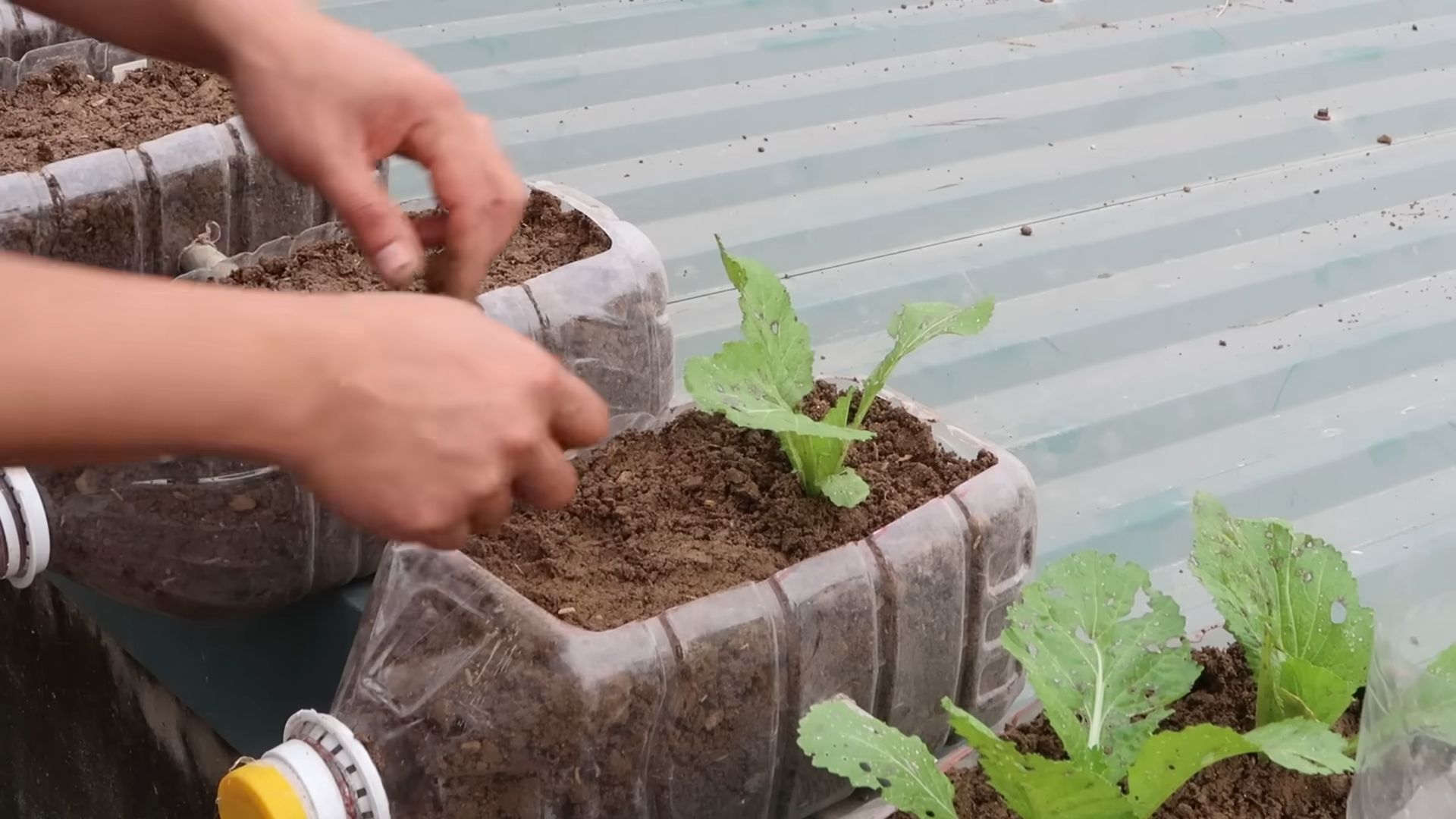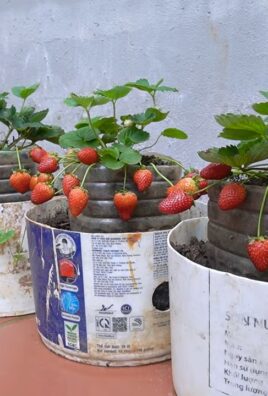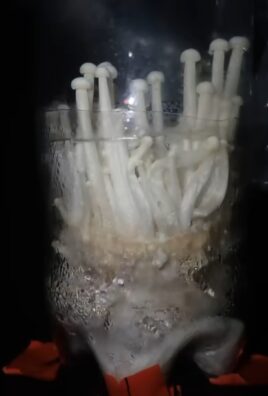Grow Vegetables at Home, even if you think you don’t have a green thumb! Have you ever dreamed of stepping outside your back door and picking fresh, juicy tomatoes for your salad, or snipping fragrant herbs to season your dinner? It’s a wonderfully satisfying experience, and trust me, it’s more achievable than you might think. For centuries, people have cultivated their own food, from ancient Roman kitchen gardens to the victory gardens of World War II. This connection to the earth, and the ability to provide for ourselves, is deeply ingrained in our history.
But in today’s busy world, who has time for complicated gardening techniques? That’s where these DIY tricks and hacks come in! I’m going to share some simple, effective methods to help you grow vegetables at home, regardless of your space or experience level. Whether you have a sprawling backyard or just a sunny windowsill, there’s a way for you to enjoy the taste of homegrown goodness. These tips will save you time, money, and frustration, allowing you to reap the rewards of a bountiful harvest without spending hours toiling in the garden. Let’s get started and unlock the secrets to a thriving home vegetable garden!

Grow Your Own Delicious Vegetables: A Beginner’s Guide
Hey there, fellow gardening enthusiasts! Ever dreamt of stepping into your backyard and picking fresh, flavorful vegetables for dinner? Well, dream no more! Growing your own vegetables is easier than you might think, and I’m here to guide you through the process, step-by-step. Get ready to get your hands dirty and enjoy the incredible satisfaction of harvesting your own homegrown goodness.
Choosing Your Vegetables: Start Small, Think Big!
Before we dive into the nitty-gritty, let’s talk about what you want to grow. It’s tempting to plant everything under the sun, but for beginners, I recommend starting small and focusing on a few easy-to-grow vegetables. This will increase your chances of success and keep you from getting overwhelmed.
Here are some excellent choices for beginner vegetable gardeners:
* Lettuce: Grows quickly and easily, perfect for salads.
* Radishes: Super fast growers, you’ll be harvesting them in just a few weeks!
* Spinach: Another leafy green that’s relatively easy to grow.
* Green Beans: Productive and delicious, especially when picked fresh.
* Tomatoes: A classic for a reason! Choose a determinate variety for easier management.
* Zucchini: Be warned, zucchini plants are prolific! One or two plants are usually enough.
* Peppers: Bell peppers and chili peppers are relatively easy to grow in warm climates.
* Cucumbers: Another vining plant that needs support, but the fresh taste is worth it.
* Carrots: Choose a shorter variety if you have heavy soil.
* Herbs: Basil, mint, parsley, and chives are all easy to grow and add flavor to your dishes.
Consider your local climate and growing season when making your selections. Check your local extension office website for recommended varieties for your area.
Preparing Your Garden Space: Location, Location, Location!
The key to a thriving vegetable garden is sunlight. Most vegetables need at least 6-8 hours of direct sunlight per day. Choose a location in your yard that receives plenty of sun.
Next, consider your soil. Vegetables need well-draining soil that’s rich in organic matter. If your soil is heavy clay or sandy, you’ll need to amend it.
Here’s how to prepare your garden bed:
* Clear the area: Remove any grass, weeds, rocks, and debris from the area.
* Test your soil: A soil test will tell you the pH level and nutrient content of your soil. You can purchase a soil test kit at your local garden center or send a sample to your local extension office.
* Amend your soil: Based on your soil test results, amend your soil with compost, aged manure, or other organic matter. This will improve drainage, aeration, and nutrient content.
* Till or dig the soil: Loosen the soil to a depth of 12-18 inches. This will allow the roots of your vegetables to grow easily.
* Rake the soil: Rake the soil smooth and level.
Starting Seeds Indoors (Optional): Get a Head Start!
Starting seeds indoors gives you a head start on the growing season, especially in areas with short summers. It also allows you to grow varieties that might not be available as transplants at your local garden center.
Here’s what you’ll need to start seeds indoors:
* Seed starting trays or containers: You can use plastic seed starting trays, peat pots, or even recycled yogurt cups.
* Seed starting mix: Use a sterile seed starting mix, not regular potting soil.
* Seeds: Choose high-quality seeds from a reputable source.
* Grow lights: Seedlings need plenty of light to grow strong and healthy.
* Heat mat (optional): A heat mat can help seeds germinate faster.
Here’s how to start seeds indoors:
1. Fill your containers with seed starting mix: Moisten the mix before filling the containers.
2. Sow the seeds: Follow the instructions on the seed packet for planting depth and spacing.
3. Water gently: Use a spray bottle to water the seeds gently.
4. Cover the containers: Cover the containers with a clear plastic dome or plastic wrap to create a humid environment.
5. Place the containers in a warm location: A temperature of 70-75°F is ideal for germination.
6. Provide light: Once the seeds germinate, remove the plastic cover and place the containers under grow lights. Keep the lights on for 14-16 hours per day.
7. Water regularly: Keep the seed starting mix moist, but not soggy.
8. Fertilize: Once the seedlings have their first true leaves, fertilize them with a diluted liquid fertilizer.
9. Harden off the seedlings: Before transplanting the seedlings outdoors, you need to harden them off. This means gradually exposing them to outdoor conditions over a period of 7-10 days. Start by placing the seedlings outdoors in a sheltered location for a few hours each day, gradually increasing the amount of time they spend outdoors.
Transplanting Seedlings or Planting Directly: Getting Your Vegetables in the Ground
Once your seedlings are hardened off or if you’re planting seeds directly, it’s time to get your vegetables in the ground!
Here’s how to transplant seedlings:
1. Choose a cloudy day: Transplanting on a cloudy day will help prevent the seedlings from getting stressed.
2. Dig a hole: Dig a hole that’s slightly larger than the root ball of the seedling.
3. Remove the seedling from the container: Gently remove the seedling from the container, being careful not to damage the roots.
4. Place the seedling in the hole: Place the seedling in the hole and backfill with soil.
5. Water thoroughly: Water the seedling thoroughly after planting.
6. Mulch: Mulch around the seedling with straw, wood chips, or other organic mulch. This will help retain moisture, suppress weeds, and regulate soil temperature.
Here’s how to plant seeds directly:
1. Follow the instructions on the seed packet: The seed packet will tell you the planting depth and spacing for each vegetable.
2. Make a furrow: Use a hoe or trowel to make a furrow in the soil.
3. Sow the seeds: Sow the seeds in the furrow, following the instructions on the seed packet.
4. Cover the seeds: Cover the seeds with soil and gently pat down.
5. Water gently: Water the seeds gently with a spray bottle.
6. Mulch: Mulch around the seeds with straw, wood chips, or other organic mulch.
Caring for Your Vegetable Garden: Water, Weed, and Watch Them Grow!
Once your vegetables are planted, it’s important to provide them with proper care.
* Watering: Water your vegetables regularly, especially during dry periods. Water deeply and less frequently, rather than shallowly and often. Aim to water at the base of the plants to avoid wetting the foliage, which can lead to fungal diseases.
* Weeding: Keep your garden free of weeds. Weeds compete with your vegetables for water, nutrients, and sunlight. Hand-pull weeds regularly or use a hoe to cultivate the soil.
* Fertilizing: Fertilize your vegetables regularly with a balanced fertilizer. Follow the instructions on the fertilizer label.
* Pest and disease control: Monitor your vegetables for pests and diseases. If you see any problems, take action immediately. There are many organic pest and disease control options available.
* Support: Some vegetables, such as tomatoes, cucumbers, and beans, need support to grow properly. Use stakes, trellises, or cages to support these plants.
Harvesting Your Vegetables: The Sweet Reward!
The best part of growing your own vegetables is harvesting them! Harvest your vegetables when they are ripe and ready to eat. The timing of harvest will vary depending on the vegetable.
Here are some general guidelines:
* Lettuce: Harvest lettuce when the leaves are the desired size.
* Radishes: Harvest radishes when they are about 1 inch in diameter.
* Spinach: Harvest spinach when the leaves are the desired size.
* Green Beans: Harvest green beans when they are tender and crisp.
* Tomatoes: Harvest tomatoes when they are fully colored and slightly soft to the touch.
* Zucchini: Harvest zucchini when they are about 6-8 inches long.
* Peppers: Harvest peppers when they are fully colored and firm.
* Cucumbers: Harvest cucumbers when they are the desired size and color.
* Carrots: Harvest carrots when they are the desired size.

Conclusion
So, there you have it! Growing your own vegetables at home isn’t just a whimsical dream for those with sprawling gardens. It’s an achievable reality for anyone, anywhere, with a little bit of know-how and a dash of enthusiasm. We’ve explored the simple yet powerful ways to cultivate your own fresh produce, transforming even the smallest spaces into thriving edible landscapes.
Why is this DIY approach a must-try? Because it’s about more than just saving money at the grocery store. It’s about reconnecting with your food, understanding its origins, and enjoying the unparalleled flavor of freshly harvested vegetables. Imagine the satisfaction of serving a salad made entirely from ingredients you nurtured from seed to table. Think about the joy of sharing your homegrown bounty with friends and family. And consider the peace of mind that comes with knowing exactly what’s going into your body, free from harmful pesticides and chemicals.
But the benefits extend beyond the personal. By embracing home vegetable gardening, you’re contributing to a more sustainable food system, reducing your carbon footprint, and supporting local biodiversity. You’re also creating a beautiful and enriching environment for yourself and your community.
Don’t be afraid to experiment and personalize your gardening journey. Try different varieties of vegetables to discover your favorites. Explore vertical gardening techniques to maximize space. Incorporate companion planting to enhance growth and deter pests. Consider starting a compost bin to recycle kitchen scraps and enrich your soil. The possibilities are endless!
Here are a few suggestions to get you started:
* For beginners: Start with easy-to-grow vegetables like lettuce, spinach, radishes, and herbs. These require minimal maintenance and offer quick rewards.
* For small spaces: Embrace container gardening with tomatoes, peppers, cucumbers, and strawberries. Choose dwarf varieties for even better results.
* For busy schedules: Opt for low-maintenance vegetables like kale, Swiss chard, and zucchini. These can tolerate neglect and still produce a bountiful harvest.
* For year-round gardening: Invest in a greenhouse or cold frame to extend your growing season and enjoy fresh vegetables even in the winter months.
We wholeheartedly encourage you to embark on this rewarding adventure of growing vegetables at home. It’s a journey of discovery, learning, and connection. And we’re confident that you’ll be amazed by the results.
So, grab your seeds, prepare your soil, and get ready to experience the magic of homegrown vegetables. And don’t forget to share your experiences with us! We’d love to hear about your successes, challenges, and favorite gardening tips. Together, we can create a community of passionate gardeners, sharing knowledge and inspiring others to embrace the joy of growing their own food. Let us know what you are growing and any tips you have for growing vegetables at home.
Frequently Asked Questions (FAQ)
What are the easiest vegetables to grow for beginners?
For those just starting out, several vegetables are known for their resilience and minimal care requirements. Lettuce is a fantastic choice, as it grows quickly and can be harvested leaf by leaf. Radishes are another speedy option, often ready to eat in just a few weeks. Spinach is also relatively easy to cultivate, providing a continuous supply of nutritious greens. Herbs like basil, mint, and chives are also excellent for beginners, thriving in pots and requiring minimal attention. These options offer a quick sense of accomplishment and build confidence for tackling more challenging crops.
How much space do I need to start a vegetable garden?
The beauty of growing vegetables at home is that you don’t need a vast expanse of land. Even a small balcony, patio, or windowsill can be transformed into a productive garden. Container gardening is perfect for limited spaces, allowing you to grow a variety of vegetables in pots, hanging baskets, or raised beds. Vertical gardening techniques, such as using trellises or stacking planters, can further maximize space. Even a few strategically placed containers can provide a surprising amount of fresh produce.
What kind of soil is best for growing vegetables?
Healthy soil is the foundation of a successful vegetable garden. Ideally, you want a well-draining soil that is rich in organic matter. A good starting point is a mix of topsoil, compost, and peat moss. Compost is particularly important, as it provides essential nutrients and improves soil structure. You can also amend your soil with other organic materials like aged manure or leaf mold. If you’re using containers, choose a potting mix specifically designed for vegetables. Regular soil testing can help you determine if your soil is lacking any essential nutrients and guide your fertilization efforts.
How often should I water my vegetable garden?
Watering frequency depends on several factors, including the type of vegetables you’re growing, the weather conditions, and the type of soil you have. Generally, vegetables need consistent moisture, especially during hot and dry periods. Check the soil moisture regularly by sticking your finger a few inches into the soil. If it feels dry, it’s time to water. Water deeply and thoroughly, ensuring that the water reaches the roots. Avoid overwatering, as this can lead to root rot. Mulching around your plants can help retain moisture and reduce the need for frequent watering.
What are some common pests and diseases that affect vegetable gardens, and how can I prevent them?
Pests and diseases can be a challenge for any gardener, but there are several preventative measures you can take to minimize their impact. Companion planting, such as planting marigolds near tomatoes to deter pests, can be an effective strategy. Regularly inspect your plants for signs of pests or diseases, and address any problems promptly. Use organic pest control methods, such as insecticidal soap or neem oil, to avoid harming beneficial insects. Ensure good air circulation around your plants to prevent fungal diseases. Crop rotation can also help prevent the buildup of soilborne pests and diseases.
How do I know when my vegetables are ready to harvest?
Each vegetable has its own specific signs of ripeness. Generally, look for vibrant color, firm texture, and the appropriate size for the variety. For example, tomatoes should be fully colored and slightly soft to the touch. Cucumbers should be firm and green, but not overly large. Leafy greens can be harvested when they reach a usable size. Harvesting vegetables at their peak ripeness ensures the best flavor and nutritional value. Don’t be afraid to experiment and taste-test your vegetables to determine when they are at their best.
Can I grow vegetables indoors?
Yes, you can absolutely grow vegetables indoors, especially if you have a sunny windowsill or grow lights. Herbs, lettuce, spinach, and tomatoes are all good candidates for indoor gardening. Choose compact or dwarf varieties that are well-suited for container gardening. Ensure that your plants receive adequate light, either from natural sunlight or grow lights. Provide good air circulation and water regularly. With a little care and attention, you can enjoy fresh vegetables even in the dead of winter.
How can I extend my growing season?
There are several ways to extend your growing season and enjoy fresh vegetables for a longer period. Starting seeds indoors allows you to get a head start on the growing season. Using cold frames or row covers can protect your plants from frost and extend the harvest into the fall. Planting succession crops, such as planting a new batch of lettuce every few weeks, ensures a continuous supply of fresh greens. Choosing cold-hardy vegetables, such as kale and spinach, can allow you to harvest even in the winter months.




Leave a Comment